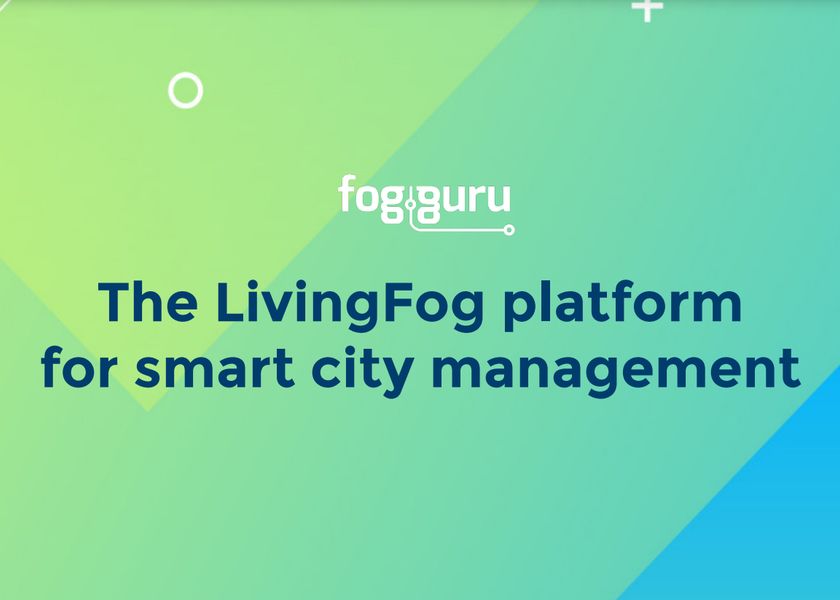LivingFog

LivingFog
LivingFog is an open source Fog Computing platform targeting Smart Cities. LivingFog natively supports LoRaWAN Gateways (LoRaWAN), and enables cities willing to develop and deploy smart city solutions to lower complexity, time-to-deployment and total cost of ownership (TCO). This comes from the use of open source technologies and open standards, that differentiates LivingFog clearly from current smart city solutions, that are typically based on proprietary technology, lack interoperability and bring along vendor lock-in.
What are the benefits?
1. Lower pressure on the wireless network infrastructure:
• The majority of data is processed where it is generated/used
• Less data needs to be sent to the cloud, which reduces the necessary available bandwidth
2. Greater system reliability:
• The system keeps working during long-distance network outages
• Local response that particularly matters in the case of a failure of the network
3. Faster reactions from event detection to reaction
4. Better quality of service for the end users:
• Reduced waiting time and faster responses
• Access to uninterrupted services
5. Fully open computing infrastructure:
• No lock-in with specific equipment vendors
• Full control of the data processing infrastructure
• Better resource management
Success story #1
LivingFog: Fog Computing technologies for smart water management
Potable water is a precious resource in many regions of the world, and particularly in semi-desertic areas such as the South of Spain. Over the previous decade, EMIVASA, a public-private company in charge of water management in the city of València, has been active at the forefront of IoT technologies.
EMIVASA deployed more than 420,000 smart water meters in every household which periodically report their readings to data centres through wireless networking technologies.
The transferred data are then processed in various ways such as detecting water leaks or other incidents leading to abnormal water usage, which in turn brings considerable efficiency improvements to the management of precious water resources. However, this system relies on 15-years-old technologies.
To ensure transition to more modern and open technologies, FogGuru offers a prototype platform which integrates Fog Computing and LoRaWAN software: LivingFog.
How does this software work?
Owing to LoRa, the smart water meters send collected data to LoRa Gateway. Each of the LoRa Gateway nodes is equipped with its own dedicated network server which allows the installation of Fog Computing servers in the same location. LoRa Gateways forward then the data to the Fog servers where they are processed immediately after having been received. These pre-processed results may be sent to cloud servers for a visual interpretation.
What are the benefits?
1. Optimized water consumption:
• Water leaks and abnormal water usage can be detected within minutes instead of days
• Citizens can be made aware of their consumption
2. Water management is improved due to an efficient system which allows company to:
• Be independent of any vendors
• Monitor water consumption of all users in real-time
• Take more accurate management decisions
• Quickly and locally react in case of a leak
Success story #2
LivingFog: IoT FabLab
Fog Computing has emerged as a new way for managing and processing data collected by IoT sensors, especially for smart-city environments.
It has brought many benefits in terms of improved analysis efficiency and enhanced data security.
FogGuru has created an IoT Fabrication Laboratory (FabLab) in Las Naves, València, as a place where anyone can invent new ways to manage and utilize smart-city data! How? FogGuru installed a batch of IoT sensors and a complete fog computing infrastructure at La Marina de València collecting a variety of useful data including water quality, weather, height of the sea waves inside the harbour, people and car counters entering and exiting the area, etc.
Thanks to the LivingFog software, these different sensors measure various parameters and send the gathered data to several LoRa Gateways, which forward them to Fog Computing clusters where they are immediately processed. Some of the data is sent to cloud servers for further processing, or long-term storage.
To support invention and creativity, FogGuru provides open access to its FabLab in Las Naves in València, and allows creative worldwide users from a variety of backgrounds to experiment and develop futuristic IoT solutions that can make people’s lives easier.
What are the benefits?
1. Data-driven governance of the managing entity La Marina
2. Accurate and real-time information for the visitors of La Marina and citizens of València
3. Improved experience of the visitors of La Marina and citizens of València
4. Futuristic experimentation site open data access for students, researchers, start-ups and government, etc.
#smartcity #management #iot #fogcomputing #sensors #water #leaks #port #fablab
Your cookie preferences
We use cookies and similar methods to recognize visitors and remember their preferences. To learn more about these methods, including how to disable them, view our cookie policy.


